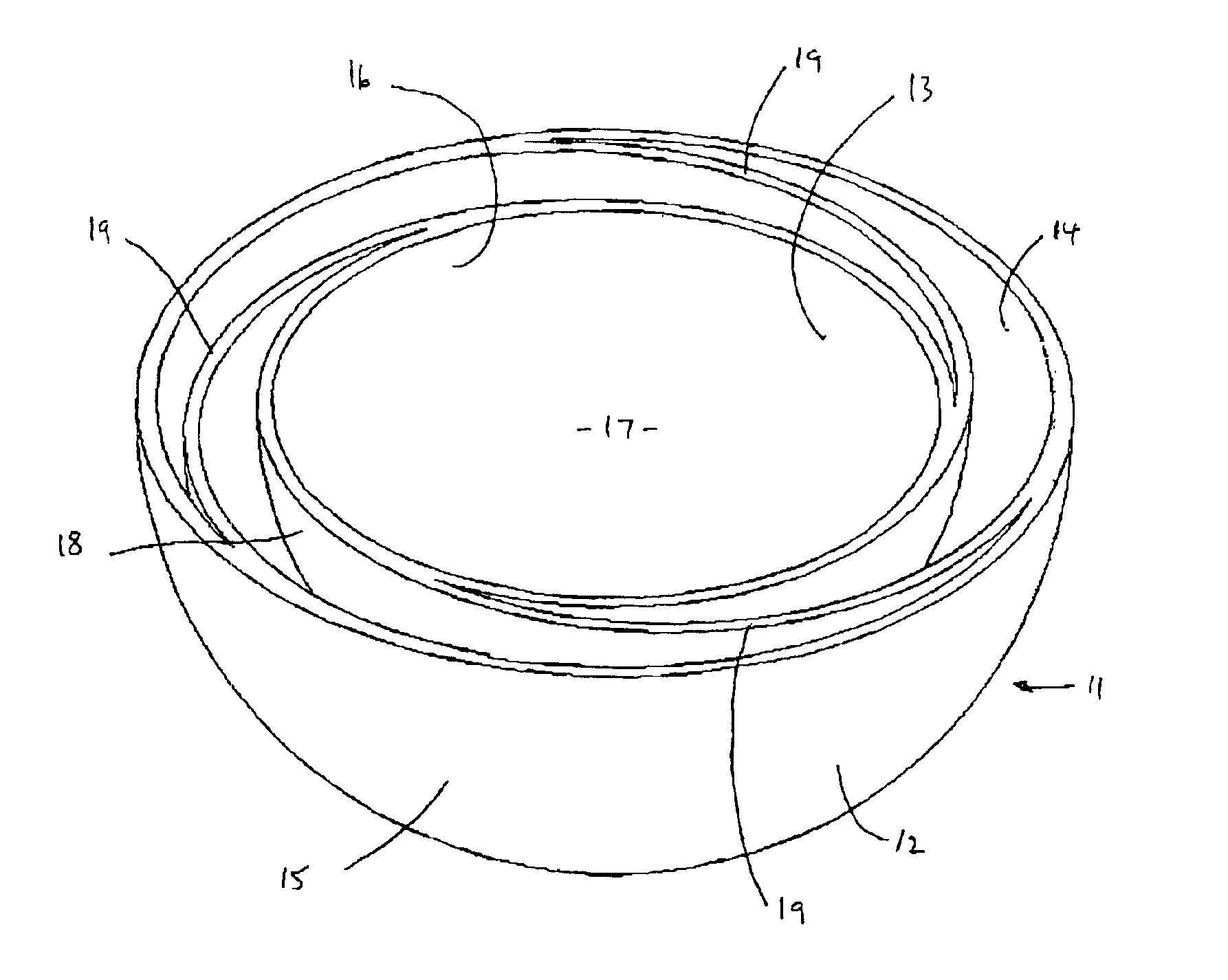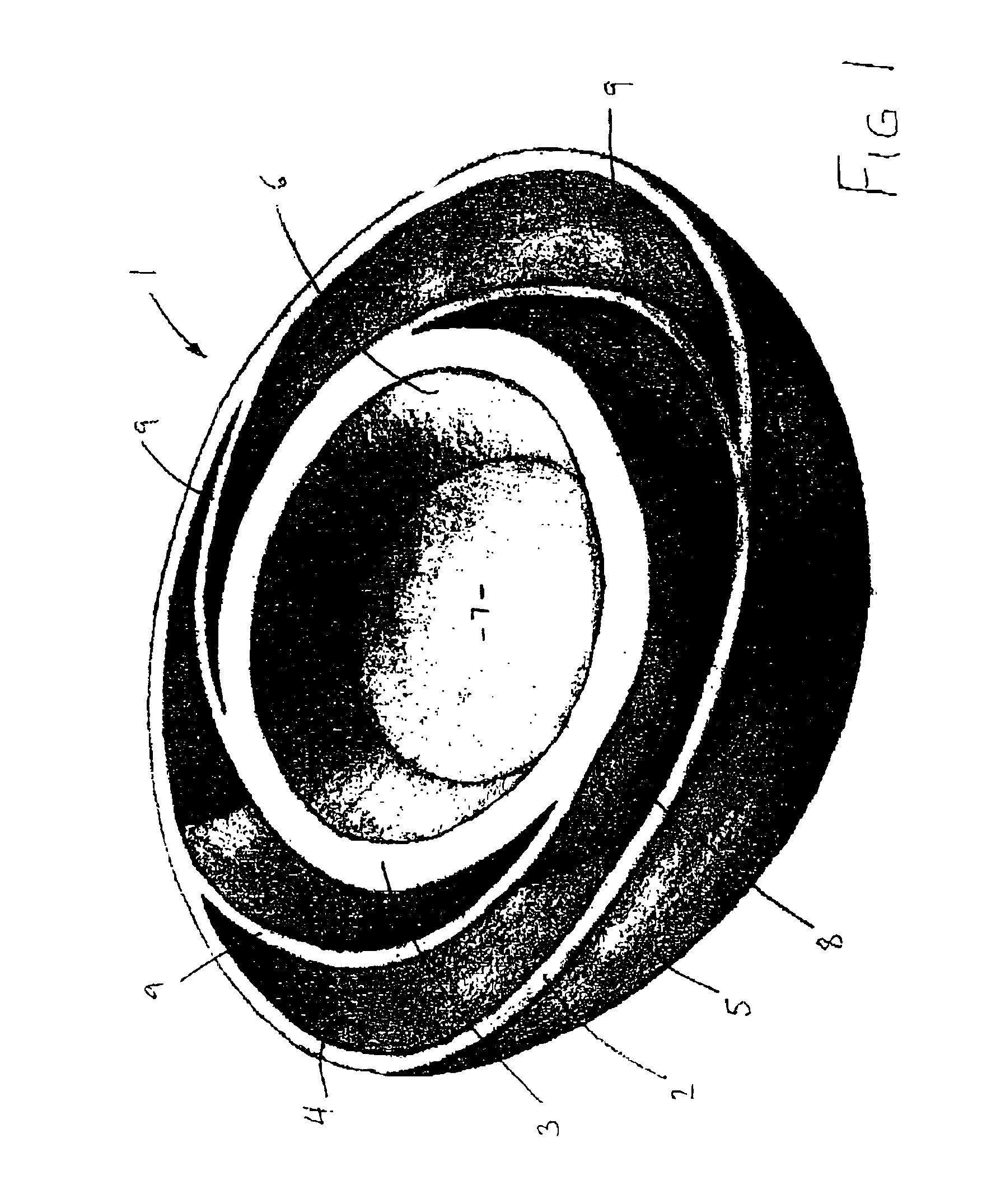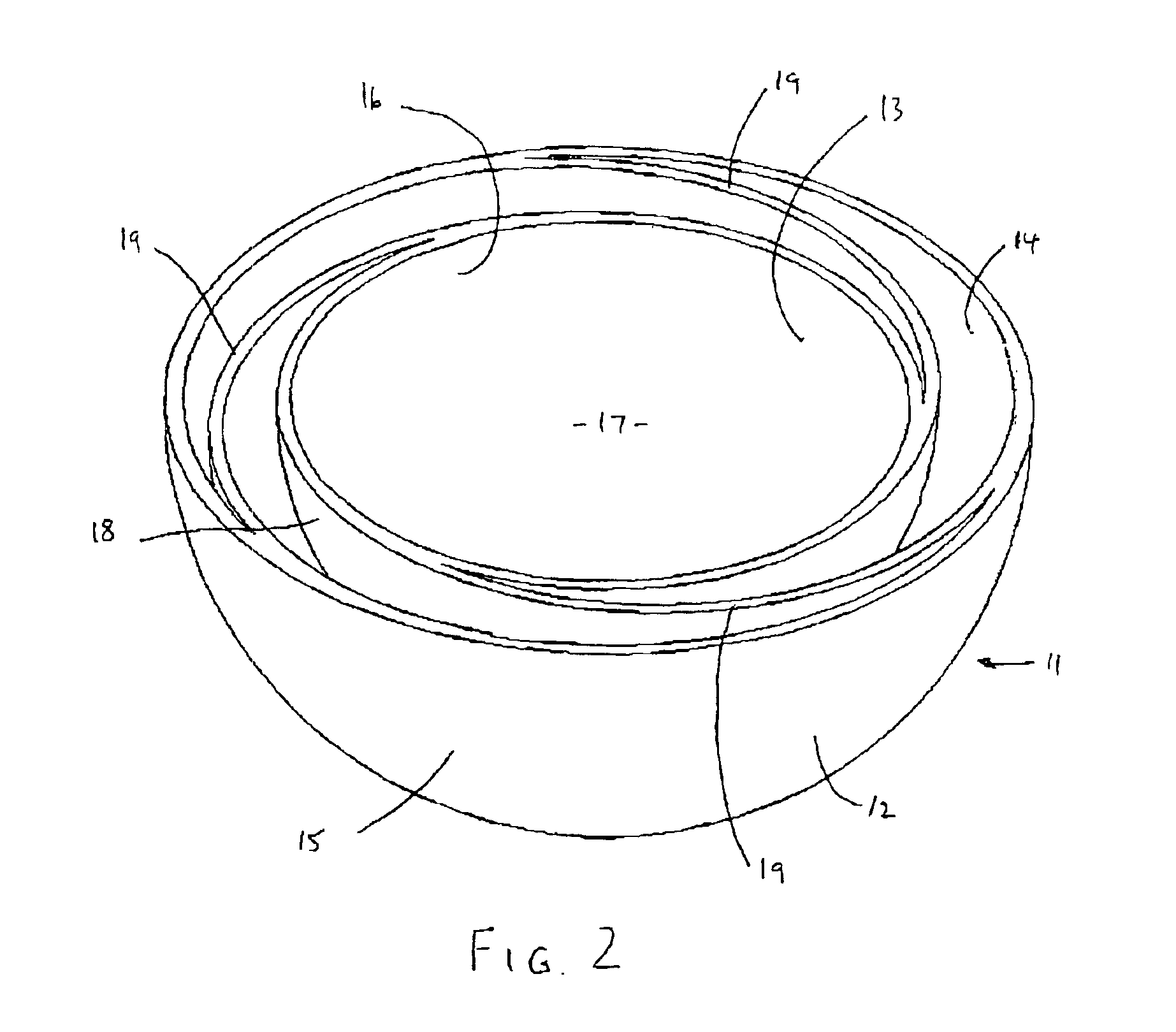Prosthesis
a technology for prostheses and acetabular joints, applied in the field of prosthesis, can solve the problems of affecting the life expectancy of prostheses, fatigue fracture and wear, and breakage of either the bone or the cement used to bond the prosthesis to the bone, and achieve the effect of facilitating and promoting bone ingrowth into the outer portion, and being more rigid
- Summary
- Abstract
- Description
- Claims
- Application Information
AI Technical Summary
Benefits of technology
Problems solved by technology
Method used
Image
Examples
Embodiment Construction
[0026]Referring to FIG. 1 of the drawings, an acetabular prosthesis 1 made of cobalt-chrome comprises an outer cup-shaped portion 2 and an inner cup-shaped portion 3. Inner portion 3 is nested within but spaced from outer portion 2. Outer portion 2 has a substantially concave inner surface 4 and a substantially convex outer surface 5, while inner portion 3 has a substantially concave inner surface 6, which defines a frusto-conical cavity 7, and a substantially convex outer surface 8. Flexible connecting means in the form of thin vanes 9 connect the outer convex surface 8 of the inner portion 3 to the concave inner surface 4 of the outer portion 2. Such a prosthesis can be made by stereolithography. The flexibility in vanes 9 will be dependent upon the thickness thereof. Hence different flexibilities can be achieved by utilising different thicknesses of vanes 9 or by varying the thickness of vanes 9 along their length.
[0027]Cavity 7 is intended for receipt of a ceramic or plastics ma...
PUM
| Property | Measurement | Unit |
|---|---|---|
| diameter | aaaaa | aaaaa |
| flexible | aaaaa | aaaaa |
| biocompatible | aaaaa | aaaaa |
Abstract
Description
Claims
Application Information
 Login to View More
Login to View More - R&D
- Intellectual Property
- Life Sciences
- Materials
- Tech Scout
- Unparalleled Data Quality
- Higher Quality Content
- 60% Fewer Hallucinations
Browse by: Latest US Patents, China's latest patents, Technical Efficacy Thesaurus, Application Domain, Technology Topic, Popular Technical Reports.
© 2025 PatSnap. All rights reserved.Legal|Privacy policy|Modern Slavery Act Transparency Statement|Sitemap|About US| Contact US: help@patsnap.com



